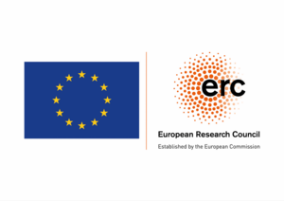Alfred-Wegener-Institute, Helmholtz Centre for Polar and Marine Research
Polar regions are amongst the most sensitive and vulnerable regions on Earth. In particular, the long-term interactions between climate, ecosystems and humans in polar continental areas are still poorly understood. The “Polar Terrestrial Environmental Systems” research group investigates past climate dynamics, vegetation change, arctic lake system dynamics and biodiversity change in the high latitudes. As the time-period covered by direct observations is short, the analysis of long-term changes requires the use of indirect proxy data extracted from environmental archives such as lake sediments. Therefore, proxy development and proxy data synthesis are also key research interests of the group. From these, a better understanding of the polar continental areas and their interactions with the global Earth system can be gained.
Research topics
- Biodiv: The research area “High-latitude Biodiversity” investigates the changes in polar biodiversity in response to climate and land-cover variability over the late Pleistocene to present‐day warming.
- PastClim: The research field “Past Climate Change” explores glacial, periglacial and lacustrine records of polar palaeoclimate and palaeoenvironmental change along temporal and spatial gradients with a focus on hotspot regions of current global warming in Siberia, North America and West Antarctica.
- LandCover: The research area “High-latitude Vegetation Change” investigates past and recent and prognoses the future dynamics of boreal forest and tundra. Research Foci are the biodiversity and land cover change at the climate-time scale, boreal fire dynamics, Northern Transgression of the treeline, and the disappearance of tundra regions and summergreen needle leaf habitats and refugia.
- Earth System Diagnostics: Earth System Diagnostics develops and uses a systematic approach to constrain the possible range of future climates and environments through the use of (proxy) observations, statistics and models.
Methods
- Biodiv: Analyses of sedimentary ancient DNA as a proxy for past biodiversity
- PastClim: Laboratory and field methods are used to apply and develop palaeoenvironmental proxies with a focus on stable isotope methods in different materials (e.g. ground ice, glacial ice, sediment, organics, diatoms, …).
- LandCover: Past, recent and future dynamics of high-latitude vegetation by Simulations using the individual-based and spatially explicit Larix vegetation simulator LAVESI, remote sensing analyses, pollen-related applications from terrestrial and aquatic archives and environmental and Paleogenetic approaches.
- Earth System Diagnostics: Proxy-System modeling, Laboratory and field methods to better understand proxy systems; Statistical methods and analysis of proxy data, instrumental observations and model simulations.
Responsible persons
Section head: Prof. Dr. Ulrike Herzschuh, AWI Potsdam and University of Potsdam
Biodiv: Dr. Kathleen Stoof-Leichsenring, AWI Potsdam:
PastClim: Dr. Hanno Meyer, AWI, Potsdam
LandCover: Dr. Stefan Kruse, Dr. Birgit Heim, AWI Potsdam
Projects we participate in
“Changing Earth – Sustaining our Future” (POF4), Helmholtz program
- Topic 5 Landscapes of the Future: Securing Terrestrial Ecosystems and Freshwater Resources under Natural Dynamics and Global Change
Subtopic 3 Natural dynamics of the terrestrial Earth surface system: Determining functions and sensitivities of the Earth surface system. - Topic 2: Ocean and cryosphere in climate
Subtopic 2.2 Variability and Extremes
PastClim:
Palmod, CiASOMas part of MOSAiC, PLOT, IsoPerm, IsoArc, …
Earth System Diagnostics:
Space-time structure of climate change (SPACE)

European Research Council (ERC) Starting Grant
SPACE determines and uses the space-time structure of climate change from years to millennia to test climate models, fundamentally improve the understanding of climate variability and provide a stronger basis for the quantitative use of paleoclimate records.

Horizon 2020 research and innovation programme
Fyntan Shaw’s PhD project “Estimating and accounting for diffusion in deep ice using advanced statistical methods” is funded by the DEEPICE training network.

Federal Ministry of Education and Research (BMBF)
As part of the national project PalMod, ESD members work on quantifying of transient proxy uncertainty.
Land Cover:
Project “Сlimate-induced treeline dynamics in the Ural Mountains: drivers, constraints, and the role of genetic adaptation”, DFG Stefan Kruse
Project “Veränderungen der Pflanzendiversität auf dem südöstlichen Tibetischen Plateau während der letzten 21 ka und deren Treiber”, DFG Stefan Kruse
Project “Glacial Legacy on the establishment of evergreen vs. summergreen boreal forests”, ERC Ulrike Herzschuh
Projects within Helmholtz HEIBRIDS Ulrike Herzschuh
Project “AI-vergreens – AI-supported classification of boreal forest biomes” – BMWi Birgit Heim
Project “ESA CCI Permafrost” Phase-I (2018-2021), II (2022-2025), Birgit Heim (PI Gamma Remote Sensing, CH)
Project “FAIR WISH”, Helmholtz Metadata Collaboration HMC Birgit Heim (PI GFZ)